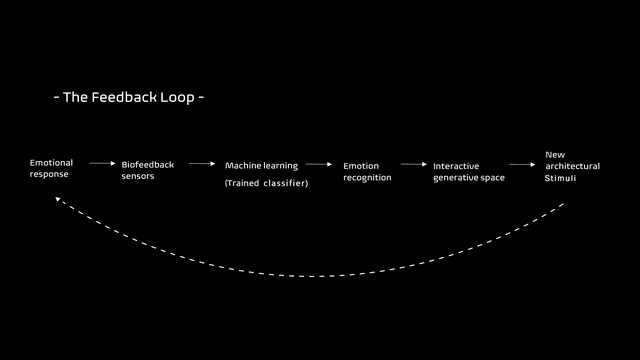Spatial Intimacy 2023, Germany, Weimar
A real-time generative architecture based on emotional response in Virtual Reality



Can the connection between architecture and humans be expanded beyond the functional and cultural aspects? What about an emotional connection? How would it feel to be in a space formed by emotions and to interact with it? And can an algorithm design a space that adapts to user’s emotion and interact with it? Spatial intimacy - Real-time generative architecture based on emotional response in Virtual Reality - is an intimate and emotional dialogue between architecture and users. Breaking down the architectural space to architectural Stimuli that are responsible to evoke certain emotions and implementing them in the dynamic architectural experience, Spatial Intimacy emphasizes the connection and offers a new approach to implement it.
Although many forms of art were used to express feelings and emotions and gave emotions great importance such as poetry, painting, music, literature, and dancing, architecture is the least form of art that is considered emotional. It is easier for people to relate a piece of art of any form with specific emotions, especially those who do not have an architectural background. What appears to some as a weak relationship with emotions does not necessarily mean a lack of connection or that they have not experienced this connection themselves. Every building that we use, even those whose purposes are purely functional, evokes certain emotions whether they are positive or negative emotions. Personal Architecture ... Spatial intimacy : Emphasizing this connection will improve the spatial experience and expand the intersection between spatial design and users. The implementation of modern technology will also offer architects a design as well as an evaluation tool that will assist in designing a user-centered experience. By creating a personalized space that reacts to the user’s emotions and responds to every emotional change within the space, it creates a personal and intimate dialog and connection with the space, hence, Spatial Intimacy. The dialog is both ways, users’ emotions change within the space, and the space changes in response. Emotions : The quality of the spatial experience improves when the connection to the space and the interaction with it is emphasized and explicit, emotionally engaging, and when the experience is highly personalized. Using both user’s Biodata and emotional data in the experience will present unique parameters that are distinctly different for each user not to mention the personal nature of these data. This intimate experience will transform the view of architecture as a functional art to a closer more intimate art with a great capacity to express emotions and will bridge the gap between architectural spaces and users. Generative spaces : One of the most important characteristics of generative art and generative architecture is that it is data-driven. The algorithm in one project doesn’t change but the data that is fed to it is what creates the different outcomes. In one way, it can be seen as an artistic representation of data. Randomness feature, on the other hand, can generate unseen and unforeseen designs that are not predictable. This ensures a personal connection with the generated art when knowing that the art one’s data produced is uniquely generated to this user and unrepeated. A higher interest in the interaction is expected when there is less predictability involved. Another feature, the outcomes are not pre-designed. Real-time : All the elements in the experience; emotions (Biodata), architecture, and Virtual environment are analyzed, processed, generated, rendered, and viewed simultaneously in real-time to create an immersive experience and create a suitable condition for creating a feedback loop.
Poster
Details
Team members : Marah Doleh
Supervisor : Prof. Reinhard König, Clemens Wegener, Stefan Kraus
Institution : Bauhaus-Universität Weimar
Descriptions
Credits
Marah Doleh
Marah Doleh
Marah Doleh
Marah Doleh